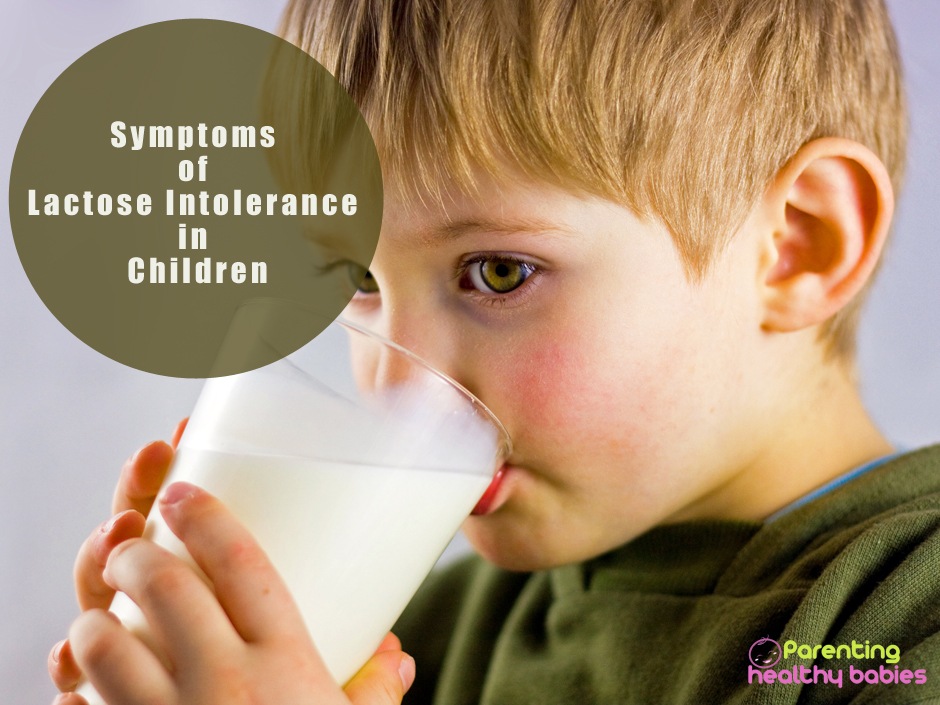Many kids just like adults suffer from lactose intolerance. Sadly, children struggle to explain their symptoms. This is why you must keep extra vigil and ensure that your child doesn’t suffer from lactose intolerance and if he does, you must do what it takes to reduce its effects on him. Read on to know the must know symptoms of lactose intolerance in kids.
5 Must Know Symptoms of Lactose Intolerance in Children
The term ‘lactose intolerance’ is being heard quite commonly nowadays. However, most people think that lactose intolerance and milk allergy is the same thing. But they are actually not. Being lactose intolerant is a kind of digestive problem and many children suffer from this problem.
Basically children who have lactose intolerance are not able to produce abundant lactase in the body. Lactase is a natural enzyme, which helps in breaking down and digesting lactose in the body. Lactose is a kind of sugar, which is found in different kinds of foods, particularly in milk and various kinds of dairy products.
Soft cheeses, ice creams, yogurts etc are some great examples in this regard. Other food items, which are rich in lactose include various kinds of breads, baked products, candies, some breakfast cereals, salad dressings, pancake mixes etc. Don’t be surprised because breast milk also contains lactose.
What is the reason behind lactose intolerance?
Before you understand the symptoms of lactose intolerance, it is important to know the cause or reason behind the digestive problem. Chemically, lactose is categorized as a disaccharide. This means that lactose is made of two simple molecules of sugar, namely galactose and glucose. When this sugar needs to be absorbed, it has to be split into simpler components with the help of an enzyme called lactase. The lining of the small intestine is the place where this enzyme is particularly found.
In people who are lactose intolerant, the function of lactase enzyme is basically ineffective. Thus the sugar, which is present in milk and other dairy products, cannot be digested and absorbed by the body. Since the sugar cannot be digested properly, it is fermented by the gut bacterial flora present in the large intestine. And when this fermentation takes place, it leads to various kinds of symptoms, which indicates that the child is lactose intolerant.
Strong Lactose Intolerance Symptoms to Check Out for in Children
With improper digestion, fermentation of sugar takes place in the large intestine. Gut flora make this happen. Hydrogen and carbon dioxide is produced as a result of this process along with other harmful products. And all these components together have strong laxative effects.
Mentioned below are some of the strong symptoms, which one should check out for lactose intolerance in children:
- Intense stomach bloating with nausea and flatulence
- Loose stool and formation of gas. The problem aggravates with the consumption of various kinds of foods, which contain a great percentage of lactose like dairy products etc.
- Frequent colds and rashes on skin
- Gas with watery diarrhea
- Abdominal cramping and generalized abdominal pain
The symptoms and signs of lactose intolerance will also depend on the amount of lactose, which has been taken in and consumed. Higher the levels of lactose consumed, greater and severe will be the symptoms in a child.
In many cases it has been seen that the symptoms begin towards late childhood and go into the adolescent phase. Acute symptoms start appearing during adulthood. The only comforting thing is that this digestive disorder is non-threatening in nature. There are also no long-term complicated associated with the same. Just following an altered diet is what is needed to deal with this problem successfully.
Diagnosis and treatment options for lactose intolerance
Testing lactose intolerance is quite simple and easy. Lactose breath test is the easiest way of testing the same. After consuming lactose, the levels of hydrogen are tested in the breath for detecting the severity of the problem.
Slight amount of hydrogen is normally detected in the breath. But when the levels of hydrogen are high, it indicates improper digestion of lactose in the body. And this could be a strong signal for lactose intolerance.
There is no complete cure for this digestive problem. However, when necessary dietary modifications are made, the child can be saved from the problem of lactose intolerance. Sometimes, for alleviating symptoms of the problem, it is recommended to take some kind of over-the-counter lactase enzyme supplement in case one has consumed lactose-containing food items.
A dietician can guide as what kinds of foods a lactose intolerant child can have so that he is not deficient in nutrients that lactose-rich food provide.
